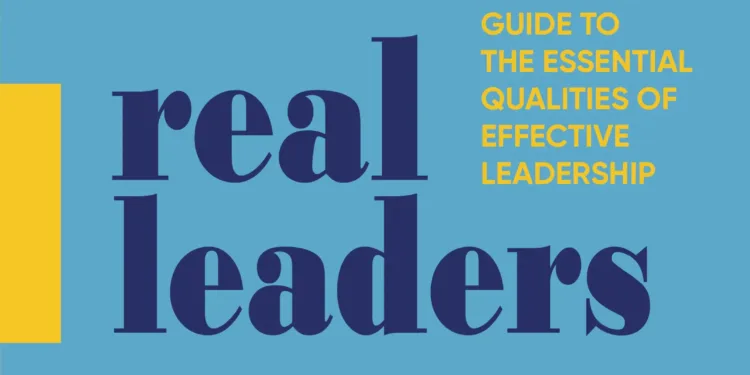By John McLachlan, co-author of ‘Real Leaders: a practical guide to the essential qualities of effective leadership’
Business leaders tend toward being either more reflective or more action-oriented. Action-oriented leaders spare little time for conversation, they quickly decide on a course of action. A reflective leader, on the other hand, will want to delay the decision for as long as possible to gather as much information as they can.
Reflective Leaders
For reflective leaders, data and information are essential to figuring out the various options. Once they can see all possible options and weigh each against the other, they are more comfortable choosing their response.
Reflective leaders tend to work on the assumption that there is a ‘best answer’ and want to use logic to justify their response. To achieve that, they want as much information as possible, listening to everyone’s opinion and feedback, before making a decision.
However, sometimes there is no ‘best’ answer, or the best answer is time-sensitive. This can mean reflective leaders move too slowly to achieve the best realistic solution (or the least worst solution) or the situation could actually get worse due to the delay.
Unfortunately, reflective leaders can often be perceived as indecisive and weak. Their lack of decision-making until the last minute can sometimes lead to delays and bottlenecks, causing anxiety and frustration in the wider team.
Action-oriented Leaders
Action-oriented leaders like to get things done. And they often do. While their output may not be perfect, it keeps things moving along, and a lot gets done in a relatively short period of time.
Action-oriented leaders tend to embody the philosophy of ‘fail fast and move on’ – they believe that action, any action, is better than none. Either the solution works, or it doesn’t. If it doesn’t, you have more information which you can use to find a better solution.
However, action-oriented leaders are prone to taking action as a habit. This means they can move too fast sometimes, ending up doing more without achieving more. Ultimately, this springs from their belief that they need to get something done quickly.
Unfortunately, this can lead others to view action-oriented leaders as impulsive and sometimes rash. If things go wrong, others may not appreciate the ‘failing fast’ philosophy and, instead, feel that the situation has been poorly managed.

Effective leaders blend the two styles
To be an effective leader you first need to identify and understand your own patterns. Do you tend towards action or reflection? When does your natural style work and when does it not work?
One way to achieve this is to seek feedback from your wider team. How do they perceive you? When do they feel your style is helpful and when do they feel it hinders?
Practise the opposing style
Once you have identified your tendencies and patterns, you can begin to experiment with the opposing style. Action-oriented leaders can try pausing for longer before making a decision, seeking more input and information. Reflective leaders, on the other hand, can try making decisions quicker and seeing what happens.
By trying things out (preferably in relatively low-risk situations) you can see whether the opposing style necessarily works out worse, better, or about the same.
Emotionally regulate
Sometimes our action or reflection was driven by a sense of panic – commonly the pressure to make a decision about a high-stakes situation. Once in panic mode, our pre-frontal cortex shuts down and logic goes out of the window. Instead, we act out of instinct, either through action or reflection, whichever comes more naturally.
Emotional regulation can help combat this sense of panic, restoring logic and reason to our decision-making process. Take a moment, breathe, and notice things around the room you are in to help ground yourself. It may feel like a waste of precious time, but it can be one of the most effective steps to good decision-making.
Clearly communicate
The best leaders are clear, consistent and have integrity. This means clearly communicating your natural leadership style to your team, helping them to understand how you make decisions and why that style works for you.
If you are an action-oriented leader, you can tell your team how you prefer to fail fast but also emphasise that they should speak up if and when they find a problem with your approach. That might encourage more reflective team members to speak up earlier.
Reflective leaders can communicate their desire to discover more information, emphasising to action-oriented team members that identifying bottlenecks and other issues is still very useful.
Of course, there are times when it is hard to be consistent. Perhaps you are naturally reflective, but you need to make a quick decision. In this situation, it can be useful to communicate to your team that, while you usually like to hear their input and reflect, you simply don’t have time. Vice versa, if you are more action-oriented, you can express your frustration at waiting for more information but be clear in anticipated deadlines.

Build mixed teams
One of the best ways to blend styles is to surround yourself with people who naturally tend toward the opposite style. If you are action-oriented, having trusted team members who are naturally more reflective can help temper your speed. Reflective leaders, likewise, can benefit from more action-oriented team members to keep things moving along.
The most important thing is to be clear and explicit about your own style and other people’s styles. It can be quite stressful for reflective types to work under an action-oriented leader – they aren’t allowed time to reflect, and their opinion doesn’t seem to matter. But if you inform them that you do value their reflective input and express how it helps you make better decisions at speed, they will feel useful and valued.
Action-oriented people will find it frustrating to work under a reflective leader – things don’t move fast enough. But by informing them that their quick ideas and desire for action are useful in your reflections, they will similarly feel important and valued.
Summary
The most important question to ask yourself is: what is motivating your behaviour?
If you are itching to take action to help ease your anxiety, it may not be the best approach. Taking action to deal with an unfolding crisis, however, is sensible and practical.
If, on the other hand, you feel afraid of making a decision, you can find yourself waiting too long. If, however, you know you will soon receive more information, then waiting can be prudent.
Effective leaders know when to be more active and when to take the time to pause. Sometimes it’s best to make quick decisions, other times it’s best to step back, filter out the noise, and find a more appropriate response. There is no single approach that works for everyone.
ABOUT THE AUTHOR
John McLachlan is co-author of ‘Real Leaders: a practical guide to the essential qualities of effective leadership’ and co-founder of Monkey Puzzle Training & Consultancy, a leadership development and organisational design consultancy working with business leaders to help align teams, support innovation, build sustainable organisations and develop exceptional people who are better able to achieve results – giving leaders more time to do what they do best. www.monkeypuzzletraining.co.uk
Web:
www.monkeypuzzletraining.co.uk
LinkedIn:
https://www.linkedin.com/in/karen-meager
https://www.linkedin.com/in/john-mclachlan/
https://www.linkedin.com/company/monkey-puzzle-training-and-consultancy-limited/










